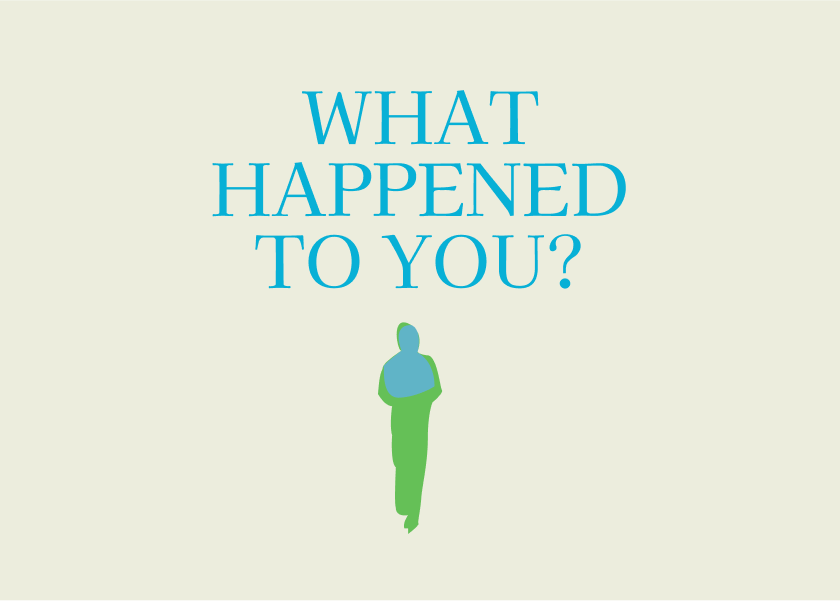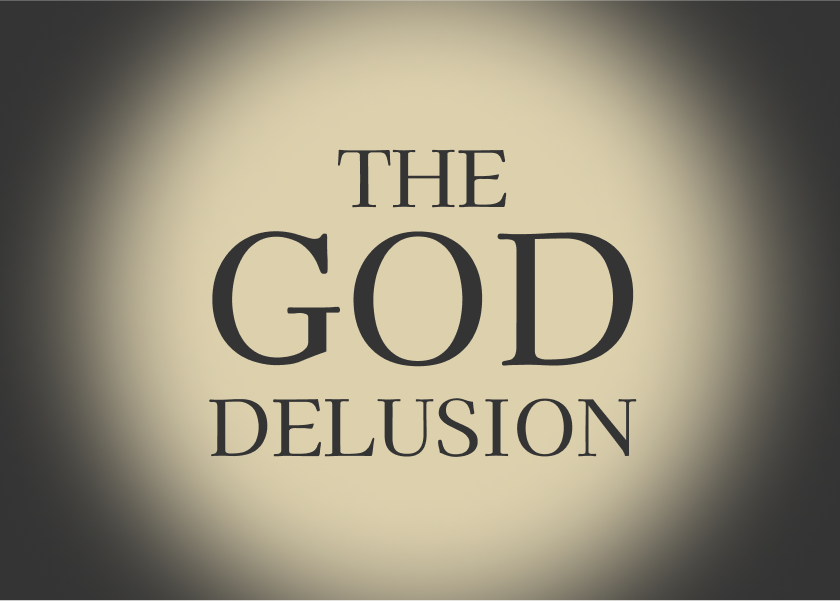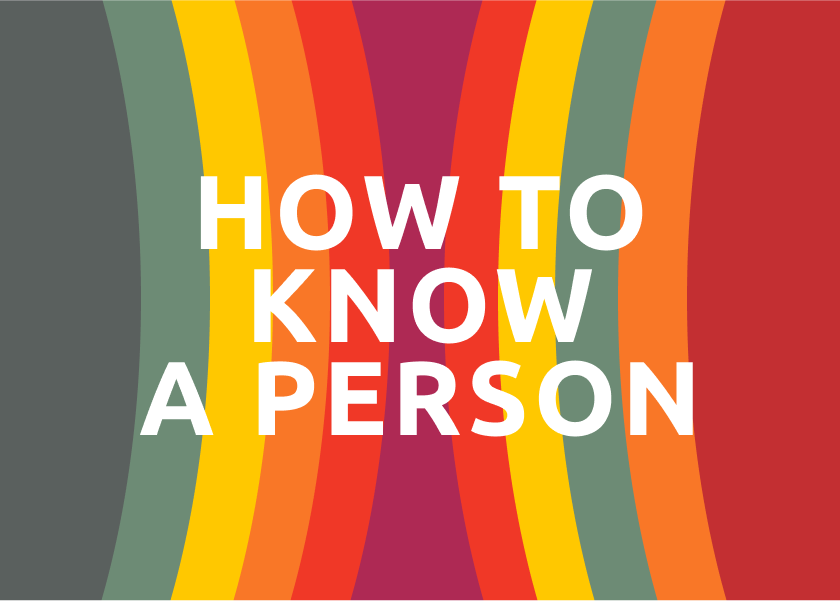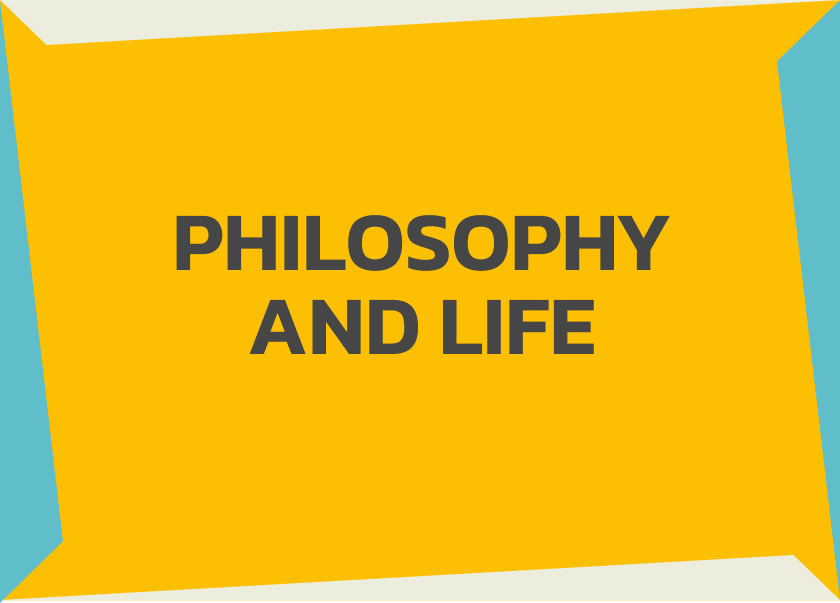What Happened to You? by Bruce Perry and Oprah Winfrey - Summary
Understand yourself and the world around you. Discover how past experiences shape who you are and uncover the hidden forces influencing society. Gain powerful insights to heal, break free, and live a more aware, fulfilling life. Question everything and find your own path forward.

The following is a summary and review of the book What Happened to You? by Bruce Perry and Oprah Winfrey.
Understanding Trauma and Finding a Path to Healing
Have you ever wondered why you or someone you love responds to life in certain ways? Why some patterns repeat, despite a conscious desire for change? What Happened to You? by Bruce D. Perry, M.D., Ph.D., and Oprah Winfrey offers a powerful lens through which to understand the impact of trauma and adversity on our lives. This insightful book, born from decades of conversation between a renowned child psychiatrist and a global media leader, shifts the focus from What Happened to You? to the more compassionate and revealing question, What Happened to You?
This summary provides a detailed overview of the book's key concepts, saving you time while offering actionable insights into how early experiences shape our brains, behaviours, and relationships. Whether you're seeking personal understanding, hoping to support loved ones, or simply curious about the science of trauma and healing, this exploration will illuminate a path towards greater self-awareness and resilience.
Table of Contents
- About the Author
- Who Should Read This Book?
- Key Insights and Themes
- Detailed Summary
- Review
- Actionable Takeaways
- FAQs
- Conclusion
About the Author
Bruce D. Perry, M.D., Ph.D., is a distinguished child psychiatrist and neuroscientist. He serves as the principal of the Neurosequential Network, a senior fellow of the ChildTrauma Academy, and an adjunct professor of psychiatry at the Northwestern University School of Medicine in Chicago. Dr. Perry is a well-respected author, known for his work on the impact of maltreatment and trauma on children's developing brains. His previous bestselling books, including The Boy Who Was Raised as a Dog and Born for Love (co-authored with Maia Szalavitz), have established him as a leading voice in the field of trauma-informed care.
Oprah Winfrey is a global media leader, talk show host, producer, philanthropist, and actress. Through her influential platform, most notably "The Oprah Winfrey Show," she has fostered unparalleled connections with millions worldwide for over two decades. Her dedication to insightful conversations and her own personal journey have made her a respected and admired public figure. Winfrey's involvement in initiatives like the Oprah Winfrey Leadership Academy for Girls (OWLAG) in South Africa demonstrates her commitment to supporting individuals who have faced adversity.
Their decades-long dialogue, rooted in both scientific understanding and lived experience, forms the foundation of What Happened to You?.
Who Should Read This Book?
According to the authors, this book is for "anyone with a mother, father, partner, or child who may have experienced trauma". It resonates with individuals who have been labelled "people pleaser," "self-sabotager," "disruptive," "argumentative," "checked out," "can’t hold a job," or "bad at relationships". Furthermore, it is a valuable resource for anyone seeking to better understand themselves and others.
Specifically, you will benefit from reading this book if you:
- Have experienced challenging or adverse childhood experiences.
- Recognise patterns in your life or relationships that you struggle to understand or change.
- Are a parent, caregiver, educator, or healthcare professional seeking to understand the impact of trauma on development and behaviour.
- Are interested in the science behind how the brain and body respond to stress and adversity.
- Are looking for a hopeful and compassionate perspective on healing and building resilience.
- Simply want to gain a deeper understanding of the complexities of human behaviour and emotion.
The authors acknowledge that some of the content may be challenging and emotionally intense. However, they offer reassurance and encourage readers to take breaks when needed, emphasising that the book will be a valuable tool in understanding "why 'what happened to you' shapes how you think, feel, and act".
Key Insights and Themes
Here are some key takeaways and main ideas explored in What Happened to You?:
- Shifting the Paradigm: The book advocates for moving away from asking "What's wrong with you?" and instead focusing on "What happened to you?" to understand the roots of behaviour and emotional responses.
- The Power of Early Experiences: Early childhood experiences, both positive and negative, profoundly shape brain development and create a "personal catalog" or "codebook" that influences how we perceive the world and form relationships. Repeated abuse or witnessing abuse can create strong associations between the abuser's attributes and threat.
- The Spectrum of Trauma: Trauma is not limited to extreme events; it exists on a spectrum and can include verbal, emotional, and physical abuse, neglect, and witnessing violence. What constitutes a "bad event" can be subjective.
- The Impact of ACEs: The Adverse Childhood Experience (ACE) studies demonstrate a correlation between the number of childhood adversities and the increased risk for physical, mental, and social health problems in adulthood. However, an ACE score is a superficial measure and doesn't tell an individual's full story.
- Regulation and the Brain: Our brains have different states of arousal, from calm to alert to fight-or-flight. Trauma can disrupt our ability to stay regulated in calm and active alert states.
- The Importance of Connection: Strong, positive relationships and a sense of belonging are crucial for regulation, healing, and overall well-being. "Relational poverty" can drain even resilient individuals.
- Healing Through Therapeutic Dosing: Healing from trauma often involves "therapeutic dosing"—brief, fully present moments of talking about painful experiences, interspersed with distraction and the ability to step back.
- Beyond PTSD: While Post-Traumatic Stress Disorder (PTSD) is a recognised consequence of trauma, the long-term effects can manifest in various ways, including depression, anxiety, and other mental and physical health issues.
- Transgenerational Trauma: Experiences and patterns of behaviour can be passed down through generations, influencing worldviews and responses.
- The Mind-Body Connection: Trauma impacts both mental and physical health. Physical symptoms like headaches and abdominal pain can be directly related to trauma, and the distinction between "biological" and "psychological" symptoms is often artificial.
- The Healing Power of Community: Historically, close-knit communities and intergenerational clans provided support and facilitated healing after traumatic events. Creating community in the modern, disconnected world is a significant challenge.
- Hope and Malleability: The brain is remarkably malleable, and healing is possible regardless of past experiences. Stories of resilience offer hope and help people realise they are not alone.
- Dissociation as a Coping Mechanism: Dissociation can be a powerful survival tool in the face of trauma, allowing individuals to detach from overwhelming experiences. Controlled dissociation can even be a "superpower".
- The Power of Intention: Understanding and acting on one's own intentions, rather than solely trying to please others, can be a crucial part of healing and establishing boundaries.
Detailed Summary
The book opens with a note from the authors, emphasising that it is intended for anyone touched by trauma or interested in understanding human behaviour. They acknowledge that the reading experience may be challenging at times and encourage readers to proceed at their own pace, assuring them that understanding their past can lead to a path forward.
The introduction sets the stage for the central question of the book: shifting from "What's wrong with you?" to "What happened to you?". Winfrey shares her personal journey of understanding her own past and recognising the impact of early experiences.
1. Making Sense of the World
Chapter 1 explores how we make sense of the world through our individual "codebooks" formed by early-life associations. Dr. Perry explains how repeated negative experiences, such as witnessing or experiencing abuse, can create powerful and pervasive connections in the brain, influencing future relationships and perceptions.
2. Seeking Balance
Chapter 2 delves into the concept of seeking balance and the brain's need for reward. Dr. Perry introduces the idea of a "reward bucket" that needs to be filled daily for adequate regulation. A lack of healthy rewards, such as positive human interactions, can make individuals more vulnerable to unhealthy coping mechanisms like substance use.
3. How We Were Loved
Chapter three examines the impact of how we were loved, or not loved, in our early years. The authors highlight the crucial role of consistent, nurturing care in healthy development and how early relational experiences shape our capacity for connection and trust.
4. Spectrum of Trauma
Chapter four addresses the spectrum of trauma, emphasising that it is not limited to extreme events. Winfrey shares Cynthia Bond's experience of viewing the world through a "prism of pain" after enduring trauma. The chapter discusses the subjective nature of trauma and aims to help readers recognise clues indicating they may have experienced it.
5. Connecting the Dots
Chapter five connects the dots between early adversity and long-term outcomes, referencing the seminal Adverse Childhood Experience (ACE) study. Dr. Perry explains the correlation found between ACE scores and various health and social problems in adulthood. However, he cautions that the ACE score is a limited tool and doesn't capture the nuances of individual experiences.
6. From Coping to Healing
Chapter six transitions from coping mechanisms to the process of healing. Dr. Perry stresses the importance of "therapeutic dosing"—brief, manageable moments of processing traumatic experiences. He also clarifies that the effects of trauma extend beyond PTSD, impacting mental and physical health in various ways.
7. Post-Traumatic Wisdom
Chapter 7 explores the concept of post-traumatic wisdom, highlighting the resilience and strength that can emerge from overcoming adversity. The authors share stories of individuals who have navigated significant trauma and developed profound insights and wisdom as a result.
8. Our Brains, Our Biases, Our Systems
Chapter 8 examines our brains, our biases, and our systems, highlighting how societal structures and biases can perpetuate cycles of trauma. The authors discuss the transgenerational transmission of experiences and the need for trauma-informed systems that ask "What happened to you?" rather than "What's wrong with you?". The story of Shaka Senghor illustrates the devastating consequences when this fundamental question is not asked.
9. Relational Hunger in the Modern World
Chapter 9 addresses relational hunger in the modern world, noting the challenges of creating genuine connection in an increasingly mobile and digitally connected society. The authors underscore the vital role of a "therapeutic web" of positive relationships in healing, as illustrated by the case of Timothy.
10. What We Need Now
Chapter 10 focuses on what we need now to foster healing and resilience. Drawing parallels to ancestral practices that involved connection, rhythm, ritual, and derived substances in healing, Dr. Perry emphasises the undervaluation of connectedness and rhythm in modern approaches. The story of Ally, a young girl who witnessed the death of her mother, demonstrates the profound healing power of a supportive and connected community.
Throughout the book, personal anecdotes from Oprah Winfrey and case studies from Dr. Perry's clinical work vividly illustrate the scientific concepts discussed. The authors also touch upon related topics like dissociation as a coping mechanism and the brain's tendency to repeat familiar patterns, even negative ones.
Review
What Happened to You? is a compelling and accessible exploration of the impact of trauma, skillfully weaving together scientific insights with personal stories. The conversational style, mirroring the authors' decades of dialogue, makes complex neurobiological concepts understandable for a broad audience. The book's greatest strength lies in its compassionate approach, encouraging readers to view themselves and others through a lens of understanding rather than judgment.
Dr. Perry's expertise in child psychiatry and neuroscience provides a solid scientific foundation, while Oprah Winfrey's openness and storytelling ability create a powerful emotional connection with the reader. The use of real-life examples makes the concepts relatable and highlights the pervasive nature of trauma.
However, the excerpts provided do not offer a comprehensive critique of the book. It is important to note, as the authors themselves do, that some readers may find the content emotionally challenging due to the discussion of potentially disturbing experiences. The focus on early childhood trauma might also leave some readers wanting more detailed exploration of trauma experienced later in life. Nevertheless, the book offers a valuable starting point for understanding the profound and lasting effects of adversity and provides a message of hope for healing and resilience.
Actionable Takeaways
Here’s how to apply these lessons in real life:
- Practice Self-Compassion: When you notice challenging thoughts, feelings, or behaviours, try asking yourself "What happened to me?" instead of being self-critical. This shift in perspective can foster greater understanding and compassion for yourself.
- Prioritise Connection: Actively cultivate and nurture positive relationships in your life. Make time for meaningful interactions with people who make you feel safe and supported. Remember the "therapeutic web" and seek out connections that contribute to your well-being.
- Reflect on Early Experiences: Consider how your early childhood experiences might have shaped your "personal catalog" and how you perceive the world and relationships today. This reflection can bring valuable insights into recurring patterns.
- Pay Attention to Your Body's Signals: Recognise that physical symptoms can sometimes be linked to past trauma. Be mindful of any chronic pain or discomfort and explore potential emotional roots.
- Seek Therapeutic Support When Needed: If you recognise significant patterns of distress or believe past trauma is impacting your current life, consider seeking support from a trauma-informed therapist or counsellor.
- Create Healthy Rewards: Consciously engage in activities and relationships that bring you joy and a sense of fulfilment to help regulate your "reward bucket" in healthy ways.
- Be Mindful of Transgenerational Patterns: Consider how experiences and behaviours might have been passed down in your family and how you can create healthier patterns for future generations.
- Extend Compassion to Others: When interacting with others, try to approach their behaviours with curiosity and empathy, remembering that their actions may be rooted in their own experiences of "what happened to them."
FAQs
- What is "What Happened to You?" about? "What Happened to You?" is a book co-authored by Bruce D. Perry and Oprah Winfrey that explores the impact of trauma and adverse experiences on our lives. It encourages readers to shift from asking "What's wrong with you?" to "What happened to you?" to understand the roots of behaviour and find pathways to healing.
- Who are the authors of "What Happened to You?" The book is co-authored by Bruce D. Perry, a child psychiatrist and neuroscientist, and Oprah Winfrey, a global media leader and philanthropist.
- What are ACEs? ACEs stands for Adverse Childhood Experiences. The ACE studies are epidemiological studies that found a correlation between the number of childhood adversities (such as abuse, neglect, and household dysfunction) and an increased risk for various health and social problems in adulthood.
- What is the main message of "What Happened to You?" The main message is that understanding how past experiences, particularly traumatic ones, have shaped our brains and behaviours is crucial for healing and building resilience. The book emphasises the importance of compassion, connection, and shifting the focus from blame to understanding.
- Is "What Happened to You?" worth reading? Based on the excerpts, "What Happened to You?" offers valuable insights into the impact of trauma and provides a hopeful perspective on healing. It combines scientific understanding with relatable personal stories, making it accessible and potentially transformative for a wide range of readers.
Conclusion
What Happened to You? offers a powerful and transformative perspective on understanding ourselves and the people around us. By encouraging us to explore the roots of our experiences and behaviours through the lens of "what happened," the book provides a compassionate framework for healing and building resilience. The insights shared by Dr. Bruce D. Perry and Oprah Winfrey illuminate the profound impact of trauma and adversity while offering a message of hope and the possibility of a brighter future. Understanding our past is the first step towards navigating our present and shaping a more fulfilling future.
As an Amazon Associate, ShelfHelp may earn money from qualifying purchases. Needless to say, ShelfHelp only includes affiliate links to books we recommend and think are worth your time reading.




